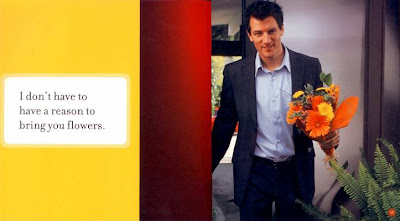Below the picture is a conversation between three characters. Kolin is a British guy, mid-twenties. Jordan is a freshman hockey player for The Big Red (age 18). He has an obsession with science and math. Brianna is Jordan's friend. The setting is outside Uris library at Cornell University in Ithaca, NY where they go to school (Jordan's the only boy on his team with a major in physics). The dual-slit enigma is something I love to ponder and I thought this conversation did the job in explaining what it is to those of you who may not be familiar with this "root" of quantum mechanics.

Kolin rubbed his shoulder where Jordan had slugged him. He looked into Jordan’s eyes and he could see that his friend was deeply concerned that he’d hurt his feelings. “—Well no need to get gutted about it. Please, explain this double slit thing then,” he said, “as a starter.”
“Okay—it’s a famous experiment that demonstrates beautifully the central mystery of quantum theory and before you ask what that is—just hold up. I want to explain that first so that I don’t lose you here. There's this standard explanation of what takes place at a quantum level known as the Copenhagen Interpretation. It attempts to describe the behavior of very small objects because they are a zoo unto themselves. Are you following what I’m saying thus far?”
Kolin nodded and opened the door to the library for Brianna and Jordan. “You’re saying that we can’t study atoms the same as we’d observe the regular world,” he clarified.
“More or less,” Jordan said, agreeing with him. He followed Bree into the library who led the way to the café by turning left. Because it was lunchtime, there was a line of about seven people for food and a separate, even longer line for coffee. “Okay, if light travels as particles let’s think of them as bullets for the purpose of envisioning what I’m talking about.”
“Got it—light photons are bullets.”
“Okay, you fire your bullets from a rifle at a brick wall with two holes in it, each hole being the same size and large enough to allow for the bullets to pass through. Behind this wall is a second wall where the bullets will strike. After firing off a few rounds you’d expect to see on the second wall two clusters of hits in line with the two holes. This is of course precisely what you get with bullets, so if we get the same result with photons we can conclude irrevocably that they’re particles.”
“That’s not what you get though, is it?” Kolin asked. “I mean with respect to the light and not the bullets.”
“Not at all,” Jordan stated. “We get an interference pattern, proving that light acts as a wave. However, it gets weirder than that. If the experiment is set up to fire individual photons, so that only one photon at a time goes through, it's logical to predict that we wouldn't expect to see the same interference pattern. To clarify, what I’m saying is that we’d anticipate a single photon to act like a bullet and that a photon would only go through one hole or another, but not through both at the same time because it’s by itself and there are two holes.”
“I follow you old boy,” he said, winking at Brianna who was obviously enjoying Kolin’s English accent.
Jordan continued. “If we wait until enough individual photons have passed through to build up a pattern—and this takes millions of photons— we don’t get two clusters opposite the two holes, we get the same interference pattern as before. It’s as if each individual photon 'knows' that both holes are open and gives that result. Now, if we repeat the experiment, this time with only one hole open, the individual photons behave themselves and all cluster round a point on the detector screen behind the open hole, just as you’d expect. However, as soon as the second hole is opened they again immediately start to form an interference pattern. An individual photon passing through one of the holes is not only aware of the other hole, but also aware of whether or not it is open.”
“That's…fucking strange,” he said, moving up in the line.
“It gets weirder,” Bree said. “Tell him what happens when we try to catch the photons misbehaving.”
Jordan smiled. “Alright, if we set up detectors at the holes, looking for electrons passing through them, the light acts as a particle. It doesn’t misbehave and doesn’t produce a pattern on the screen. It acts exactly like a particle. As soon as we aren’t looking, it goes back to acting like a wave again. The light seems to know when it's being observed.”
“I don’t think I understand what all of that means,” Kolin said. “Is there a point?”
Jordan nodded, “Yes. Nothing is real until it's observed. Or to restate that, until a thing has been observed, it simply doesn’t exist.”
“Hawking thinks that there's something outside of the universe that observes it and forces the universe to collapse into an existence that can be seen by all those inside the universe. Others believe that the universe exists only so long as we're here on Earth to observe it. Without us looking at the universe, it wouldn’t exist,” Brianna said.
Kolin didn’t say anything and turned around at the counter. He ordered a breakfast bagel and a mocha for himself; a spinach/red pepper panini sandwich and a large coffee for Jordan.
Now don't you think quantum mechanics is just about as cool as sliced bread?














































